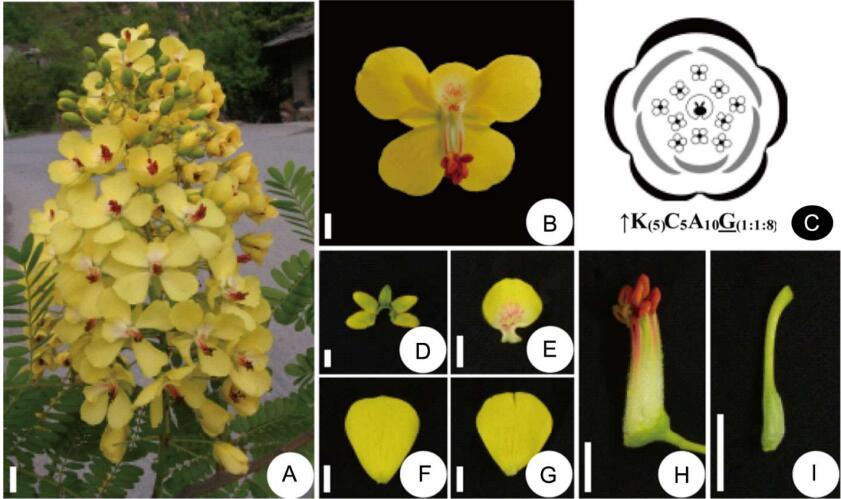The legume family ( Fabaceae) is one of the largest groups of flowering plants. Fabaceae are further classified into six sub-families based on morphological and molecular data. Despite displaying diversity in floral architecture and form, the sub-family Caesalpinioideae has been understudied.
In a study published inTaiwania, researchers from Xishuangbanna Tropical Botanical Garden (XTBG) and their collaborators investigated the floral morphology and development of two legume species from the subfamily Caesalpinioideae, Biancaea decapetala (a caesalpinioid), and Albizia julibrissin (a mimosoid), using scanning electron microscopy.
They observed that Biancaea decapetala had racemose inflorescence, whereas Albizia julibrissin had capitate heads. In A. julibrissin, central sepal initiation was adaxial, and sepal development was helical, whereas it was unidirectional and abaxial in B. decapetala. Another marked difference was that in A julibrissin, the carpel remained open and unfused at the initiation of ovules and fused later; whereas, in B. decapetala, the carpel margins fused before the ovules appeared.
They further found that the floral initiation and development took place in a sequential manner, and all floral whorls underwent requisite changes in cell/tissue organization. In A. julibrissin, ovule initiation appeared to have proceeded earlier, besides showing a distinct fusion of sepals. Further, variability in sepal initiation can be due to the helical pattern of floral development in Caesalpinioids.
“Our data on phylogenetically relevant characters can provide valuable insights and help in further understanding of legume systematics, especially in the mimosoid clade nested in subfamily Caesalpinioideae,” said LIU Hongmei of XTBG.
Contact
LIU Hongmei Ph.D
Center for Integrative Conservation, Xishuangbanna Tropical Botanical Garden, Chinese Academy of Sciences, Menglun, Mengla, Yunnan 666303, China
E-mail: liuhongmei@xtbg.org.cn
Online published 6 July 2023

Floral biology of Biancaea decapetala represented by A. inflorescence, B. flower, C. floral diagram and floral formula, D. sepals, E. standard petal, F. lateral petal, G. abaxial petal, H. stamens and I. pistil. (Image by Shabir A. RATHER)

Floral biology of Albizia julibrissin represented by A. inflorescence and B. dissected mature flower showing sepals, petals, androecium and gynoecium.(Image by Shabir A. RATHER)


